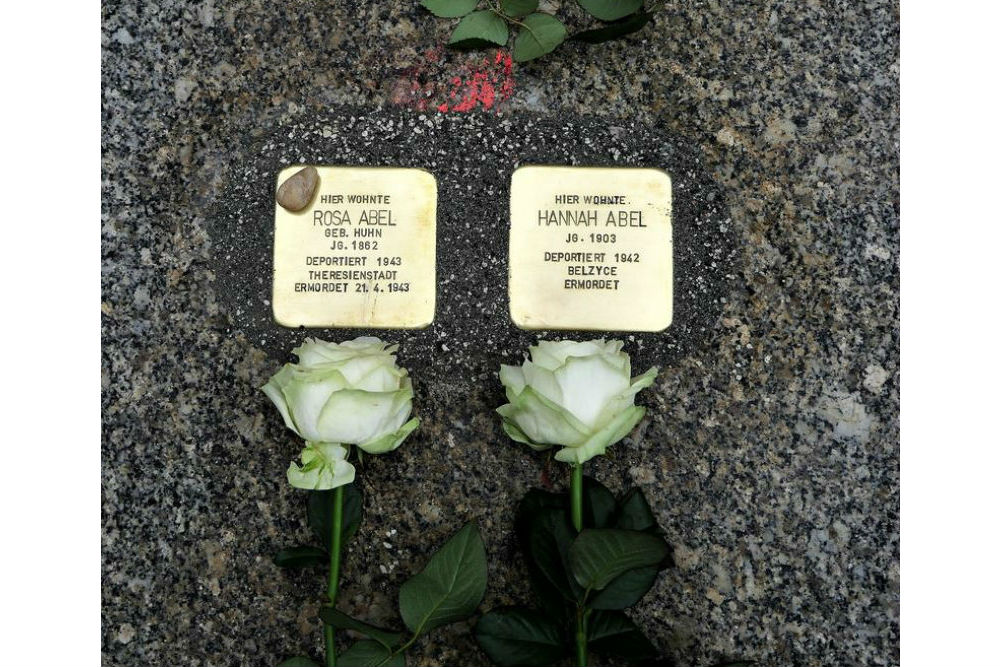Stumbling Stones Andréstraße 11
These small brass plaques (Stolpersteine / Stumbling Stones) commemorate:
* Rosa Abel née Huhn, born 1862, deported 1943 Theresienstadt, murdered 21 April 1943.
* Hannah Abel, born 1903, deported 1942, Belzyce, murdered.
Rosa Huhn and Hermann Abel, a merchant, married and had five children, including Hannah. NOTE b 1903 on stein, 1901 in article. The family moved to Chemnitz in spring 1903, where Hermann became a sales representative in the textile industry. In 1910, the family moved to an apartment at this address, Andréstraße 11. In 1915, Hermann Abel registered his agency in his name at the local court, and he expanded the scope of his work. Hermann died in 1936. Rosa and two children – Hannah and Alfred – moved to Barbarossa Street 39 where she opened a food court. Alfred began in 1938 to prepare to leave Germany, and managed to emigrate to Bolivia. Hannah started preparations in 1939 to go to England but was prevented by the outbreak of the war. In 1940, Rosa and Hannah were forced to move into the "Judenhaus" at Apollostraße 18.
Then, on 10 May 1942, Hannah and 131 other Chemnitz Jews were taken to Leipzig to join 800-1000 others in cattle cars on a train that left Weimar/Leipzig and arrived in Lublin two days later. Passengers then walked 4-5 hours from the train station to Belzyce. This and other deportations doubled the Jewish population in Belzyce to about 4,500. Harsh conditions of overcrowding and poor food and sanitation meant many died of illness and starvation. Mass deportations to death camps began in 1942. One year later, there were no Jews left in Belzyce.
Rosa lived in the Jewish Retirement Home on Antonplatz for a while. Then, according to Yad Vashem, in 1943 she and 14 other Chemnitz Jews were taken by train to join 13 others in Dresden. All 28 were taken by truck to Theresienstadt, arriving the same day. Like so many others, Rosa died there of hunger and disease. Only 3 of those 28 persons deported together are known to have survived the war.
"Stolpersteine" is an art project in Europe by Gunter Demnig commemorating victims of National Socialism (Nazism). Stolpersteine (stumbling stones) are small, 10x10cm brass plaques placed in the sidewalk in front of the last voluntary residence of (mostly Jewish) victims murdered by the Nazis. Each plaque is inscribed with the victim's name, date of birth and place (usually a concentration camp), and date of death. In this way, Gunter Demnig gives an individual memorial to each victim. One stone, one name, one person. He quotes the Talmud: "A person is only forgotten when his or her name is forgotten."
Do you have more information about this location? Inform us!
Source
Nearby
Monument
- Memorial Old Synagogue Chemnitz - Chemnitz
- Memorial Victims National-Socialism - Chemnitz
- Memorial Perished German Prisoners-of-War - Chemnitz





